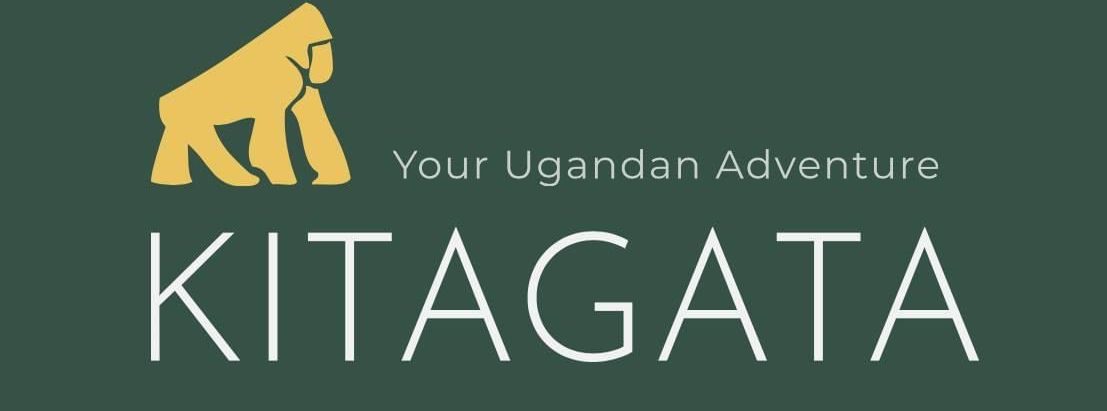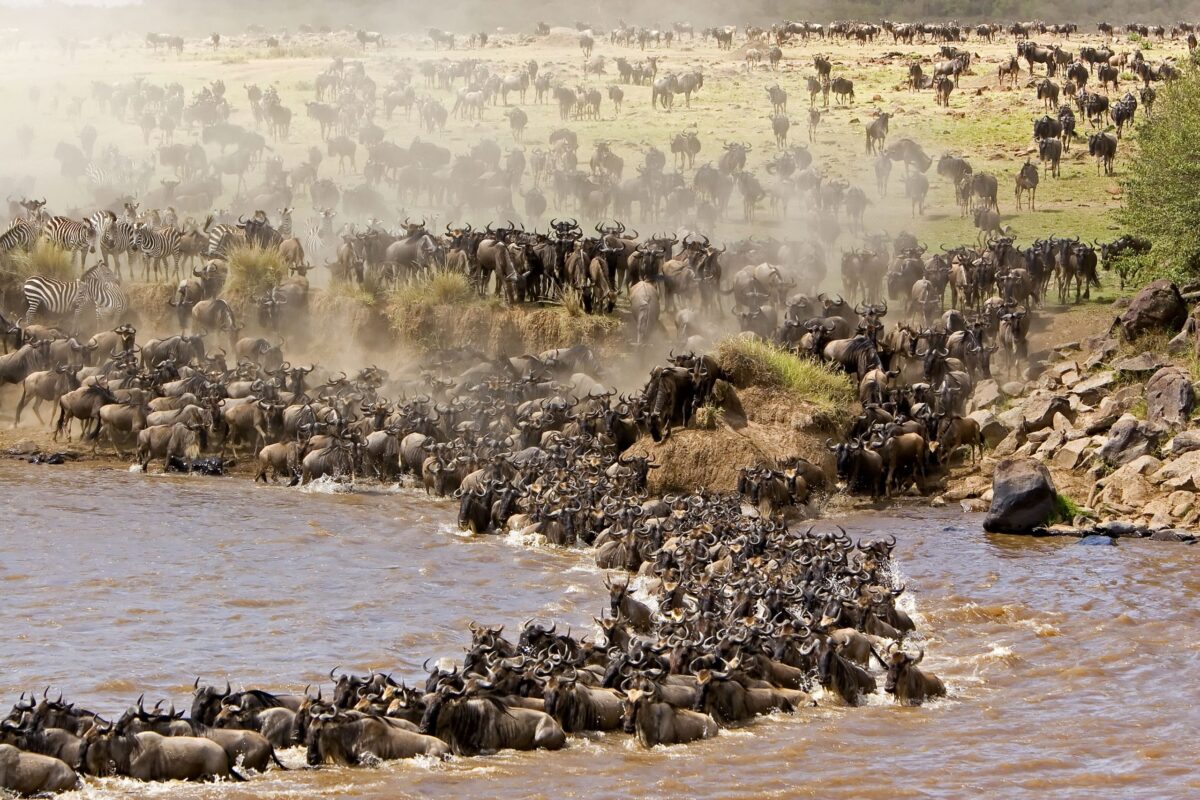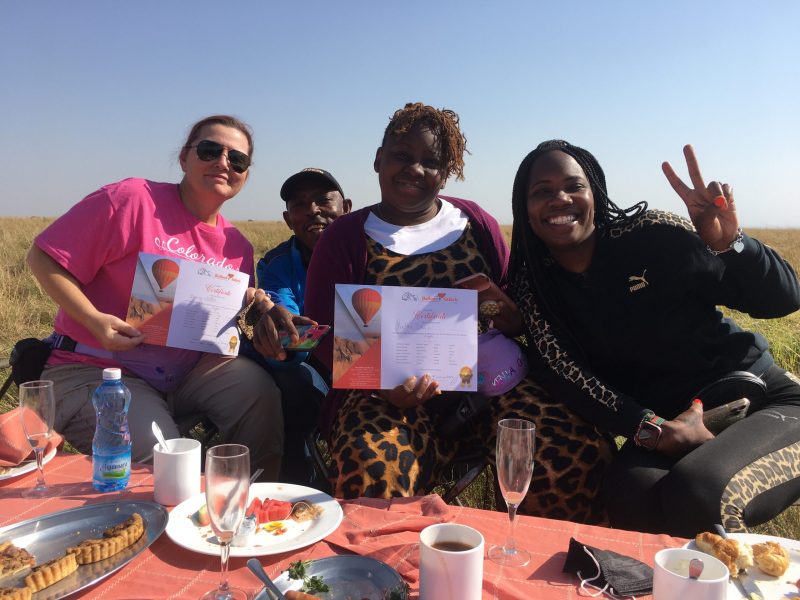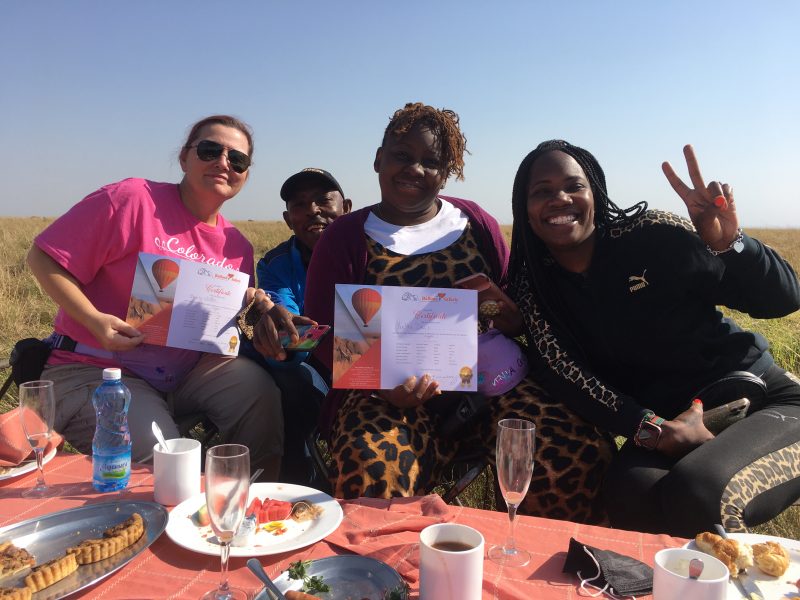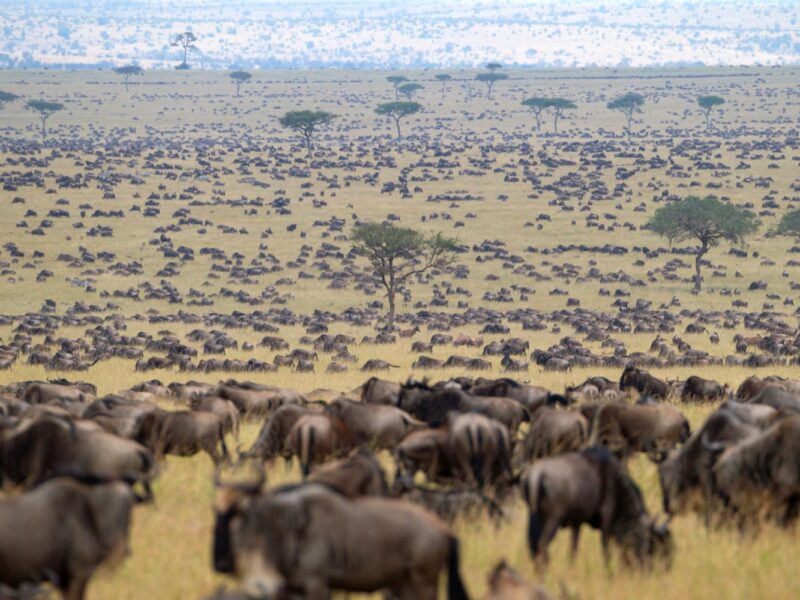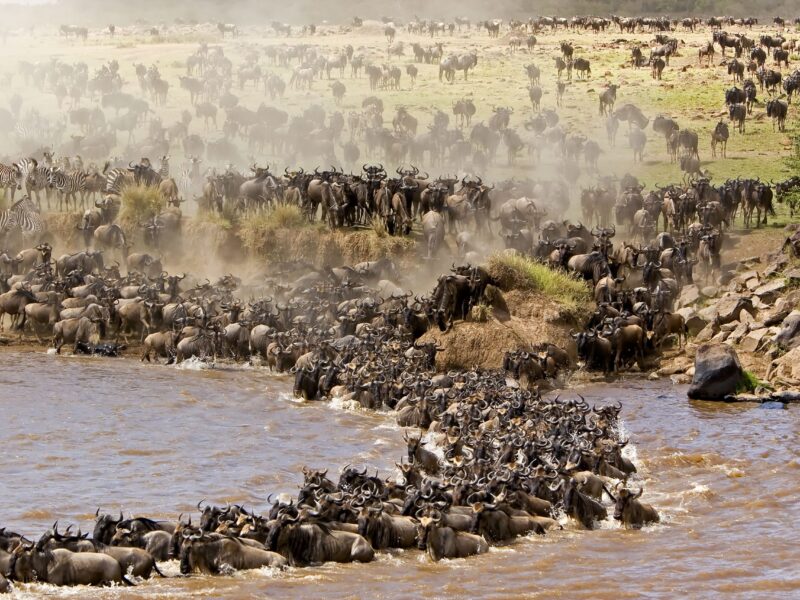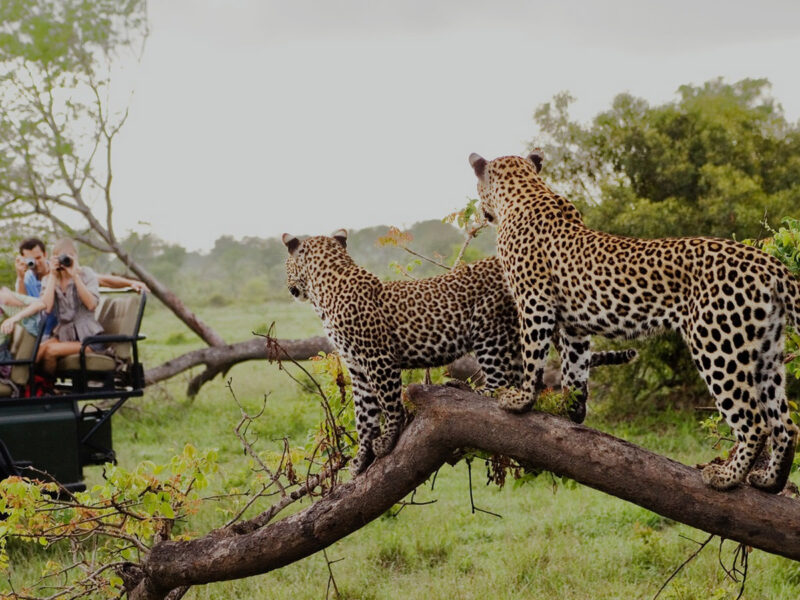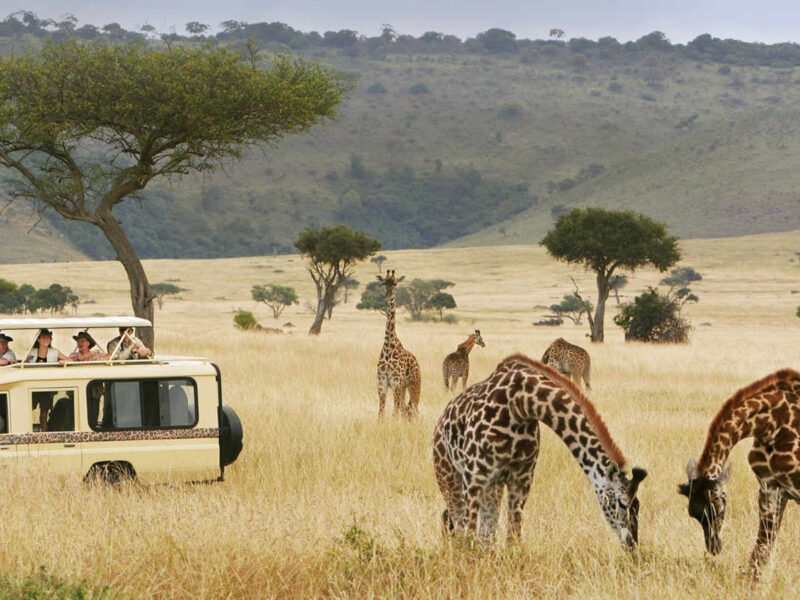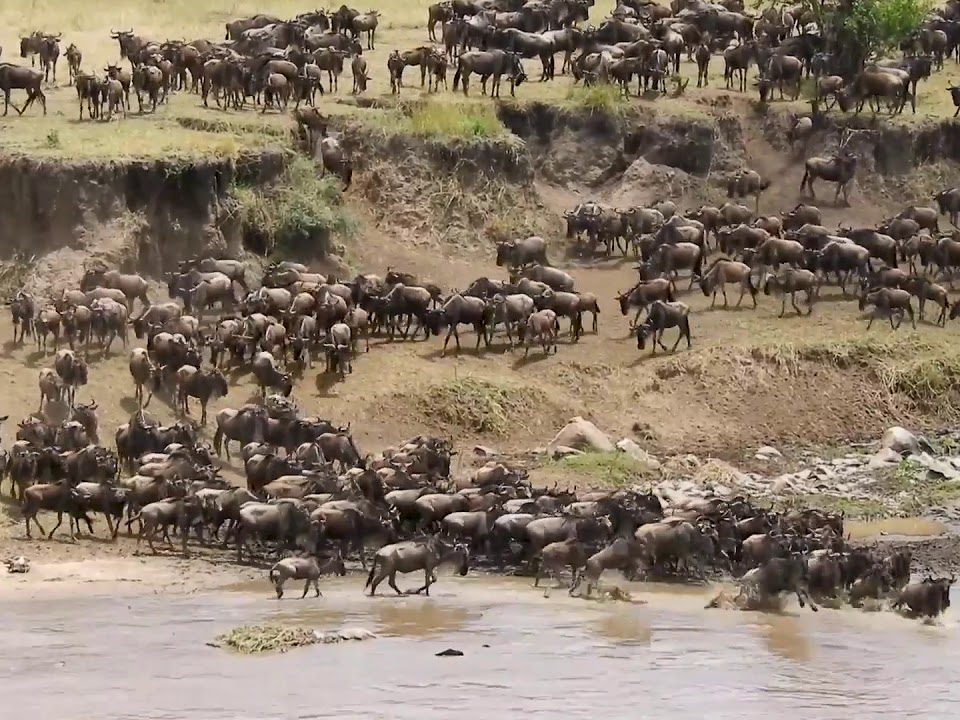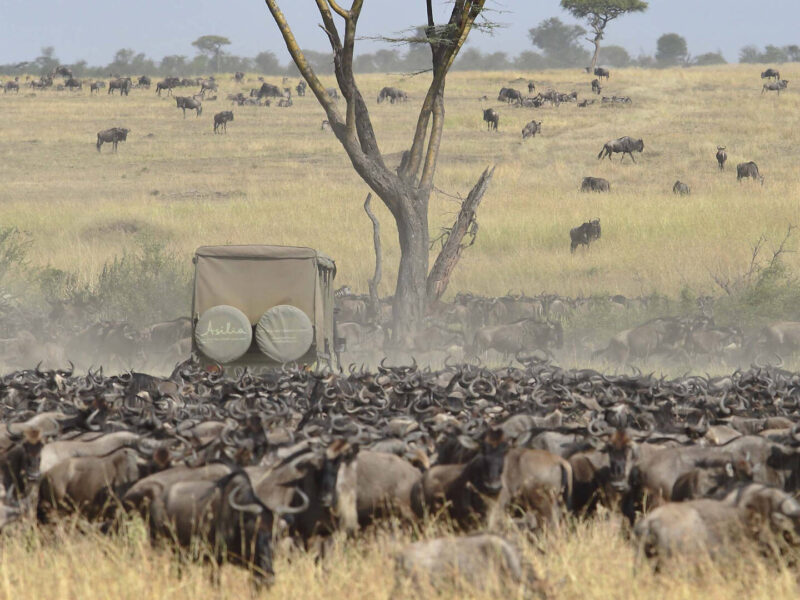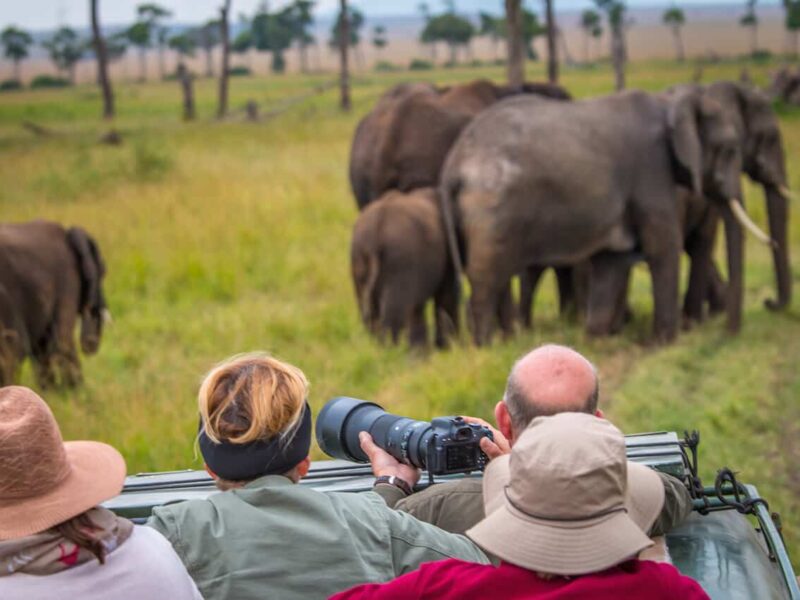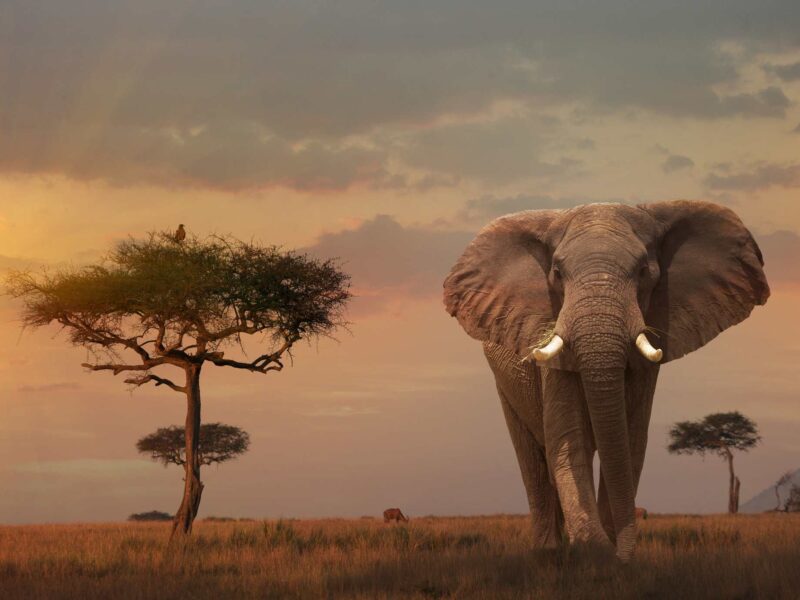Kenya Safaris | Why Kenya Safaris? | Best Trending Kenya Safaris Tour Packages | Kitagata Safaris Uganda
Perceived by many as the original Safaris tour destination, Kenya is still one of the best choices for a classic African safaris experience. Famous lion prides range across the vast open spaces of the Maasai Mara, wildebeest and zebra arrive by the millions for the annual Great Migration and in some places, pastoralist Maasai and Samburu tribespeople continue to live as they have done for thousands of years. There’s more to the country than its game reserves, however. Nairobi offers multi-faceted culture while the Swahili Coast is home to historic towns and picture-perfect beaches.
Discover the Top Attractions on Kenya Safaris
- Make the Most of a Nairobi Stopover
- Witness the Maasai Mara’s Great Migration
- Visit Both of the Tsavo National Parks
- Discover Swahili History on Lamu Island
- Photograph Flamingoes at Lake Nakuru National Park
- Trek to the Top of Mount Kenya
- Go in Search of Elephants at Amboseli National Park
- Admire the Desolate Beauty of Lake Turkana
- Book a Stay on a Kenyan Conservancy
- Make Time for Some Relaxation at the Coast
- Explore the Cultures and Landscapes of Northern Kenya
- Take a Hike in Hell’s Gate National Park
Best Trending Kenya Safaris Tour Packages | Kitagata Safaris Uganda
Reasons that Make Kenya Safaris Unforgettable
- 1. Make the Most of a Nairobi Stopover
- 2. Maasai Mara's Great Migration
- 3. Visit Both of the Tsavo National Parks
- 4. Discover Swahili History on Lamu Island
- 5. Photograph Flamingoes at Lake Nakuru
- 6. Trek to the Top of Mount Kenya
- 7. Go in Search of Elephants at Amboseli
- 8. Admire the Desolate Beauty of Lake Turkana
- 9. Book a Stay on a Kenyan Conservancy
- 10. Spend Some Relaxation at the Coast
- 11. Landscapes of Northern Kenya
- 12. Hike in Hell's Gate National Park
Make the Most of a Nairobi Stopover
Most overseas visitors fly into Nairobi for Kenya safaris. Instead of continuing your onward journey straight away, consider making time for a night or two in the capital. There’s plenty to see and do, especially in and around the affluent suburb of Karen.
Discover wild lions and black rhinos in Nairobi National Park, watch rescued baby elephants being fed at the David Sheldrick Wildlife Trust Elephant Orphanage, or come face-to-face with rehabilitated Rothschilds giraffes at the Giraffe Center.
Out of Africa fans will love the Karen Blixen Museum (it’s located in the author’s own home at the foot of the Ngong Hills). Nairobi also has some excellent craft markets, museums, restaurants, and hotels.
Witness the Maasai Mara’s Great Migration – Kenya Wildlife Safaris
Every year millions of wildebeest, zebra, and other antelope migrate together from the Serengeti National Park in Tanzania to the Maasai Mara National Reserve in Kenya safaris tour.
Their exact movements are dictated by the rains but usually, the herds enter the country in August and spend September and November grazing on its lush southern plains. The Great Migration (and the Mara River crossing in particular) is one of the world’s most iconic natural spectacles.
The Maasai Mara is also home to the Big Five and famous for its predator sightings. To make sure you get front-row seats to the action, consider staying in a mobile camp like Enaidura or Nkorombo.
Visit Both of the Tsavo National Parks
In the far southeast of the country lie the neighboring national parks of Tsavo East and Tsavo West. Together they make up Kenya’s largest protected wildlife area – but the Safaris experience in each one is quite different.
Tsavo East is famous for its picturesque red dust plains intersected by the beautiful Galana River. The river attracts an incredible diversity of wildlife, including large herds of elephants. This park also contains the world’s longest lava flow, known as the Yatta Plateau.
Tsavo West is wetter, greener, and even more scenic – although animals can be harder to spot. Make sure to visit Mzima Springs. Both parks offer a chance to see the Big Five and around 600 species of birds.
Discover Swahili History on Lamu Island
Head to northern Lamu Island to immerse yourself in Kenya’s Swahili culture. The UNESCO-recognized Old Town has been continually inhabited for over 700 years and is the oldest and best-preserved Swahili settlement in East Africa.
Visit landmarks like the Lamu Fort (which now houses the fascinating Lamu Museum), or wander through labyrinthine streets admiring the traditional coral stone and mangrove timber houses.
Arabic, Persian, European, and Indian architectural influences are testament to Lamu’s trading history. There are no motorized vehicles on the island – just donkey carts and dhows offering beach trips, snorkeling Safaris, and swimming with dolphins.
Photograph Flamingoes at Lake Nakuru National Park – Birding Safaris in Kenya
Located in central Kenya, Lake Nakuru National Park nestles on the floor of the Great Rift Valley and is famous for its vast soda lake. It takes up approximately a third of the park’s total area and attracts hundreds of thousands of greater and lesser flamingoes who come to mate, raise their young and feed on the lake’s algae.
Although pollution caused the flamingoes to migrate elsewhere in past years, recent clean-up efforts have seen many of them return to Lake Nakuru. Flamingoes aside, the park is a birding hotspot with over 450 other avian species offering the best birding safaris in Kenya. It’s also home to lions, leopards, and white rhinos; and its spectacular euphorbia forest is the largest in Africa. Entry costs $60 per adult per day.
Trek to the Top of Mount Kenya – Mountain Hiking Safaris in Kenya
Mount Kenya is Africa’s second tallest mountain and the inspiration for the country’s modern name. Those that want to climb the mountain have a choice of three peaks: Batian (17,057 feet/5,199 meters), Nelion (17,021 feet/5,188 meters), and Point Lenana (16,355 feet/4,985 meters).
The first two peaks require technical equipment and training but it’s possible for amateur trekkers to reach the summit at Point Lenana. Mount Kenya’s slopes are cloaked in forest and moorland which gives way to rock, ice and snow.
The best time to climb is during the dry months of January to February or July to October. Whenever you go, make sure to book with a reputable operator like Go to Mount Kenya.
Go in Search of Elephants at Amboseli National Park
If seeing large herds of elephants up close is at the top of your Kenya wish list, make sure to visit Amboseli National Park. Located in the far south, the reserve is famous for amazing elephant sightings set against the dramatic backdrop of snow-capped Mount Kilimanjaro (visible from across the Tanzanian border).
A diverse array of habitats makes the park a hotspot for other animal and bird species as well. Look out for all three big cats, the endangered African wild dog, and no fewer than 600 different types of birds. Maasai villages around the edge of Amboseli offer the opportunity for insightful cultural visits. The best time to go to Kenya for safaris is from June to October and entry costs $60 per adult.
Admire the Desolate Beauty of Lake Turkana –Adventure Safaris in Kenya
Also known as the Jade Sea for its pale green color, Lake Turkana is the largest permanent desert lake on the planet. It’s an off-the-beaten-track destination for those that appreciate stark beauty, with barren shores and saline waters that house the world’s largest concentration of Nile crocodiles.
The crocodiles breed on Central Island, a national park with three active volcanoes. Hippos and large flocks of flamingoes can also be seen here, but the main attraction is the lunar scenery.
Lake Turkana also has great anthropological importance as the discovery site of some of the earliest hominid fossils ever found. If you want to visit, go soon – the lake is under threat from Ethiopia’s Gilgel Gibe III Dam.
Book a Stay on a Kenyan Conservancy
For a more exclusive Safaris experience, book a stay at one of Kenya’s famous conservancies. Conservancies are tracts of land that are owned by indigenous communities but rented by eco-tourism companies and operated as private game reserves.
They have many benefits: firstly, you can rest assured knowing your money is directly benefiting the local community. Because of this, conservancies help to reduce conflict between traditional landowners and the native wildlife, thereby promoting conservation.
They aren’t restricted by the same rules as national parks and can offer night drives and walking Kenya Safaris. Recommended conservancies include Lewa, Loisaba, and Ol Pejeta.
Make Time for Some Relaxation at the Coast
After a week in the bush, spend the second half of your holiday sunning yourself on the white sand shores of Kenya’s idyllic central coast. The neighboring beach towns of Malindi and Watamu are popular choices.
As an established resort destination complete with upmarket hotels, restaurants, and bars, Malindi is the livelier option; while Watamu charms with its rural atmosphere and protected palm-fringed beaches. Popular activities include sunset dhow cruises, scuba diving, snorkeling, and deep-sea fishing.
Watamu Marine National Park & Reserve is especially well-known for the green turtles that live in its coral gardens and for the humpback whales that pass through from July to October.
Explore the Cultures and Landscapes of Northern Kenya
Kenya’s most iconic game reserves may be located in the south, but it’s well worth venturing further north to the Samburu, Shaba, and Buffalo Springs national reserves. Located virtually next door to one another in an arid landscape dotted with granite outcrops and twisted acacias, the reserves straddle the banks of the life-giving Ewaso Nyiro river.
Their unique habitat is home to some equally unique wildlife including the desert-adapted gerenuk and Oryx antelopes, the endangered Grévy’s zebra, and the reticulated giraffe (also endangered).
Animals are not the only attraction; the area is also home to the semi-nomadic, pastoralist Samburu people. Cultural Safaris provide a fascinating insight into their way of life.
Take a Hike in Hell’s Gate National Park
Situated a three-hour drive northwest of Nairobi, Hell’s Gate National Park is unlike any other park in Kenya. Part of the Great Rift Valley, it’s a center for geothermal activity and boasts soaring cliffs, plunging gorges, and immense rock pillars. Plumes of escaping steam and swimmable thermal springs add to the sense of drama.
Unlike the country’s other national parks, Hell’s Gate allows walking Kenya Safaris and has designated trails for hiking and mountain biking. Sites like Fischer’s Tower are popular with rock climbers while birders flock to the Mervyn Carnally Raptor Hide to look for nesting birds of prey. Top spots include Egyptian vultures and the majestic Verreaux’s eagle. Entry costs just $26.
